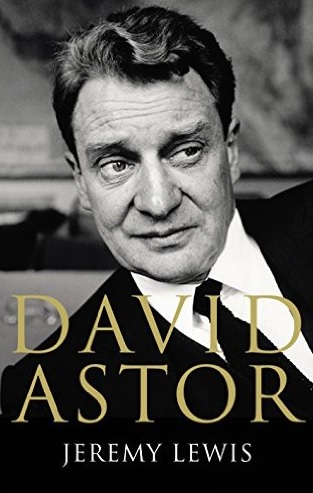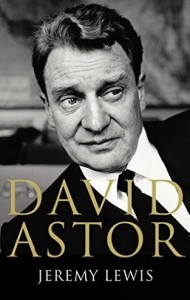
David Astor: enigmatic Editor


David Astor, pioneering Editor who loved an underdog and effective proprietor of the Observer from 1948 to 1975, for nearly three decades captures journalistic golden age, protrayed the liberal values in a world of prejudice, suppoorting the anti-colonial liberation movements in Africa and Asia, campaigning for the abolition of the death penalty, discrimination of homosexuality, prison reform and speaking out aginst authoritarianism.
Jeremy Lewis’s new biography brings out the contradictory character of David Astor and his privileged upbringing. David Astor was born in London, the third child of American-born English parents, Waldorf Astor ( 1879-1952) and Nancy Witcher Langhome (1879-1964), a wealthy business dynasty, educated at West Downs School in Winchester in Hampshire, followed by Eton College in Berkshire and Balliol College Oxford. In 1936. He joined the Yorkshire Post before joining his father’s newspaper. In 1945, Astor purchased the Manor House at Sutton Courtenay, Berkshire, and restoring the nearby Abbey in the village.
He grew up in Cliveden House and was inherited his share of the Astor millions amassed by his great-great-great grandfather by buying up Manhattan real estate in the early 19th century at the age of 21. His grandfather also bought the Observer, a Tory paper from Lord Northcliffe for £5,000, in 1911, and made him editor when he was 36. He felt he was a rich boy born with silver spoon, given a newspaper to play with. With hardly any journalistic experience, he was determined to exercise his influence and did it with ruthlessness, as his secret was to employ gifted writers, not necessary journalists. He Astor’s childhood was a struggle and his mother Nancy, celebrated as the first woman MP, but a bad influence to all her sons. Astor suggested to an interviewer how did a rich boy come to be so idealistic? and how id a cripple enjoy some success? He academically failed to shine at Eton or Oxford, which he hated, until he became the editor of the Observer.
Jeremy Lewis gives the excellent description of the golden age of the Observer from 1948 to 1960, when the war against Hilter was just over and his paper’s mission was ” trying to do the opposite of what Hilter would have done”. Astor hired contributors of the highest quality including EF Schumacher, Arthur Koestler, Sebastian Haffner, Issac Deutscher and Edward Cranshaw on Russia. Neal Ascherson on Germany and Eastern Europe, Anthony Sampson on Africa, Robert Stephens on the Middle East, and Patrick O’Donovan on east Asia. His book reviewer Philip Toynbee under Terence Kilmartin, Kenneth Tynan theatre critic in 1954, and Alan Ross wrote cricket and football.
In the quality of Sunday newspaper market the Observer never matched the Sunday Times’s circulation, but it was more stylish and influential.
Astor’s timely denunciation of the Suez debacle in 1956 led to a further loss, particularly among Jewish advertisers who objected to criticism of Israel. Then in 1959, Canadian Roy Thomson bought the Sunday Times and expanded it with multiple sections including colour supplement and in 1961 The Sunday Telegraph was founded as a further competitor. Observer launched its own colour supplement in 1964, and in 1975 he handed over the editorship to Donald Trelford. The paper was subsequently sold in the following year to an American oil magnet and then to TinyRowland, before finally ending up with the Guardian under Scott Trust.
After his retirement Astor used his own private wealth to support philanthropic causes including supplying books to Nelson Mandela.
David Astor by Jeremy Lewis, Jonathan Cape £25, 432 pages.

